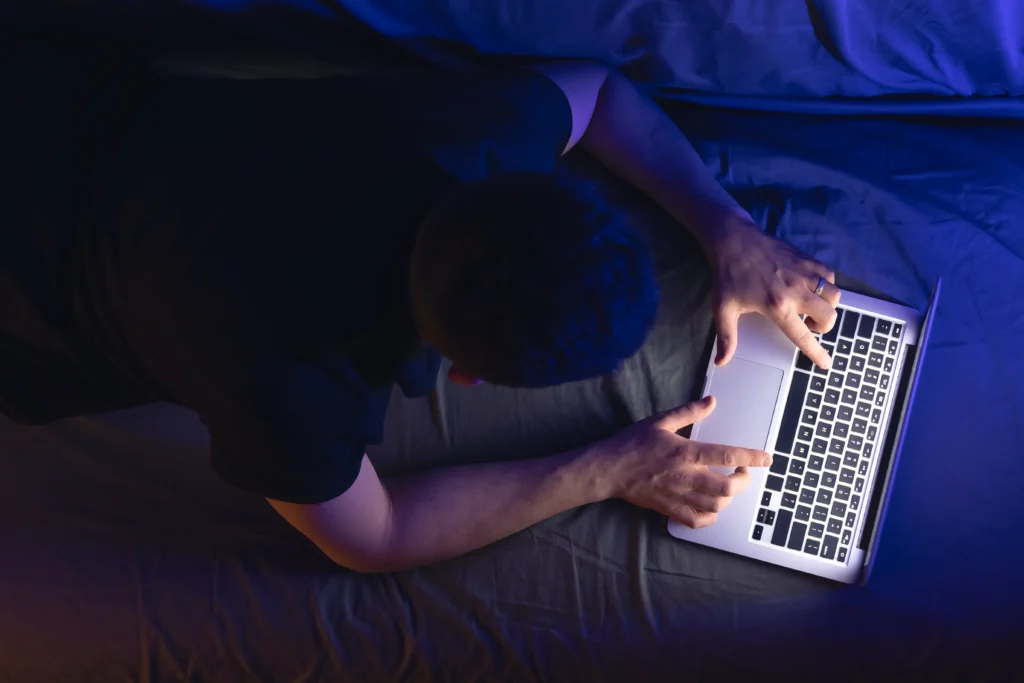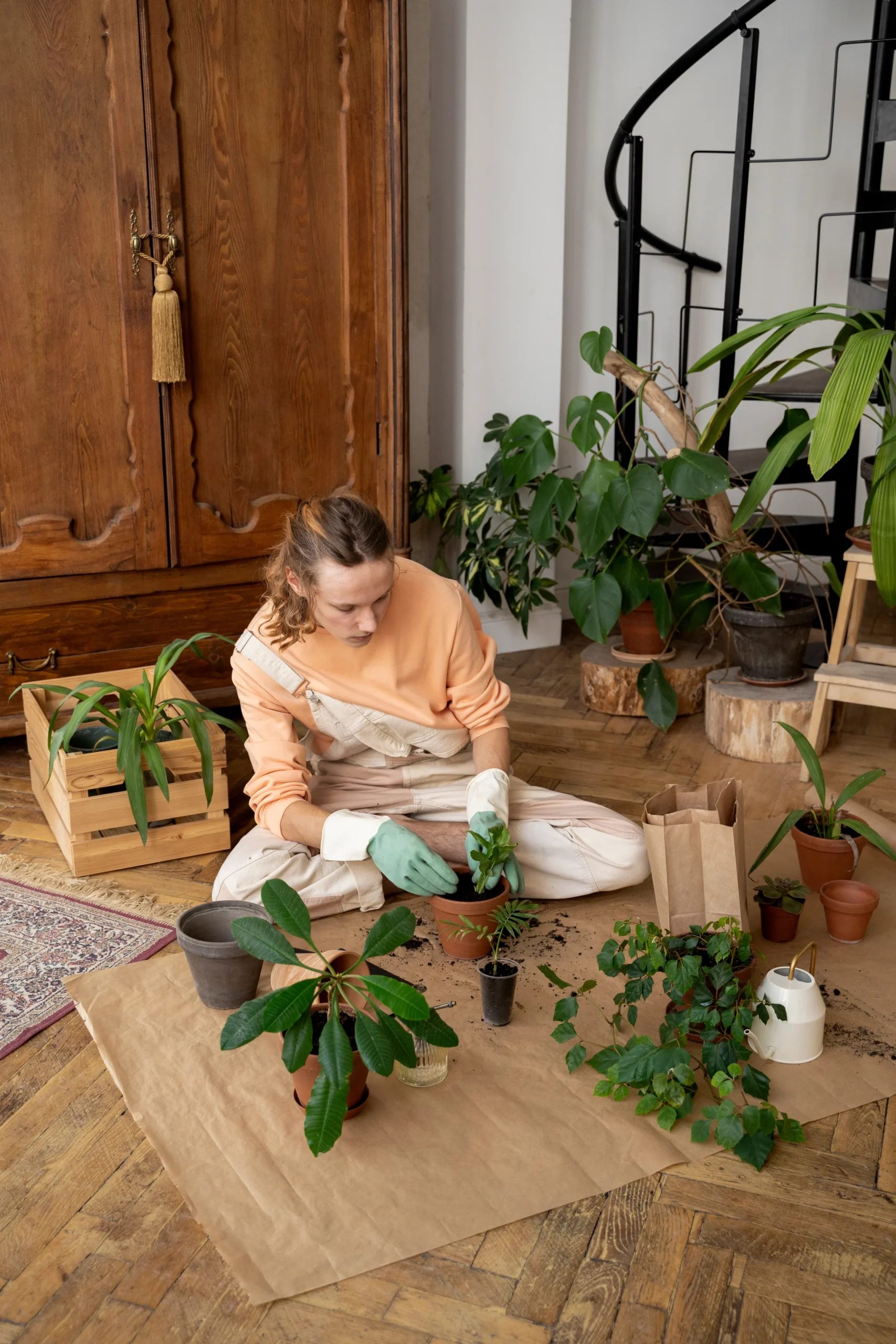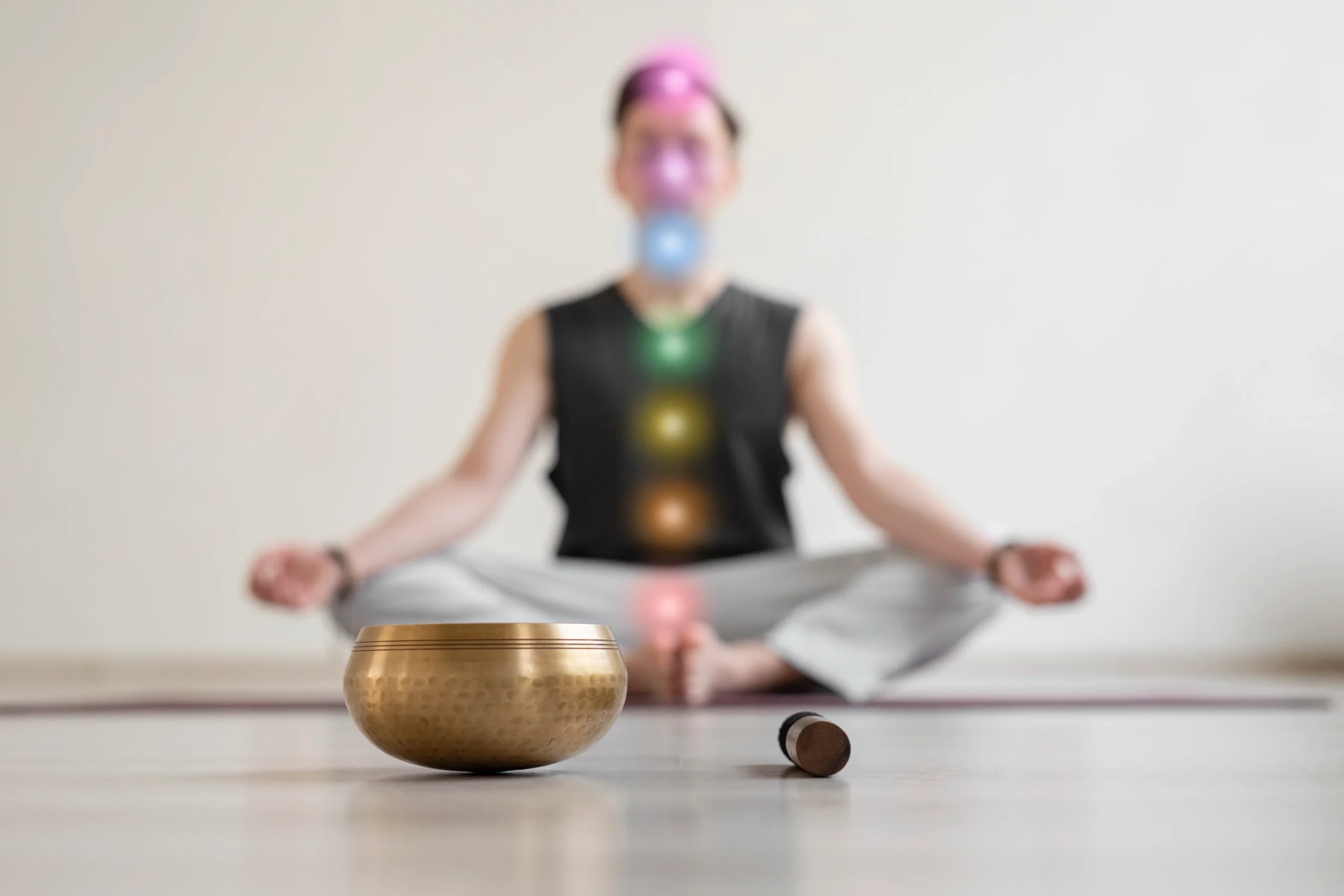Around 1 in 8 people live with a mental health disorder globally. Stress and sleep problems are common and so is the sense that modern life is simply “too much.” At the same time, our daily choices at home (what we buy, how we wash, where we spend attention) ripple outward to the environment and back to our bodies. Small rituals can steady both.
The goal of this guide: lighter nervous system, lighter footprint—without perfectionism.
1) Five-Minute Sound Reset (and why tone helps when silence won’t)
Why sound? If your brain refuses to “turn off,” resonant tone can act like a handrail into calm. In a controlled study of Tibetan singing-bowl sound meditation, participants reported significantly less tension, anger, fatigue and depressed mood after a single session. That’s not a miracle cure—it’s a practical doorway.
How to try it
- Sit comfortably. One to three slow breaths.
- Strike or circle your bowl once and simply follow the tone.
- If thoughts intrude, notice them, return to sound.
- Two to five minutes is enough to “change state.”
- End by noticing a single sensation (air on the skin, feet on the floor).
Pro tip: If you struggle with traditional breath-only meditation, start with sound; then, as your mind quiets, transition to two minutes of silent sitting.
2) Nature Minutes: The 120-Per-Week Rule of Thumb
Why it works: A large national study found that people who spent about 120 minutes per week in natural environments reported better health and well-being than those who didn’t—an easy target if you add 15–20 minutes a day.
Ways to fit it in (urban-friendly):
- Micro-greenspace loop: 12 minutes around the block at lunch.
- Green commute: Get off one stop early and walk through a park.
- Evening de-compression: Sit by trees, balcony plants, or a courtyard with your phone on airplane mode.
- Weekender: One 60-minute stroll on a trail + two 30-minute neighborhood walks.
You’re not “exercising” here; you’re contacting: light, wind, leaf textures, ground underfoot. Make it sensory, not athletic.
3) Laundry as a Climate & Skin Choice (and how to cut chemical load)
Why laundry? We do it weekly. That makes it a perfect place for a low-friction, high-impact change.
- Indoor air & dryer vents: Studies have identified volatile organic compounds (VOCs) vented during cycles that used fragranced detergents and dryer sheets, including acetaldehyde and others. Sensitive folks report eye, skin, and airway irritation.
- Energy use: Dryers are energy-hungry appliances; the U.S. Energy Department recommends tech/features that shut off when clothes are dry and notes ENERGY STAR dryers use ~20% less energy, with heat-pump models saving even more (20–60%). Reducing drying time and improving airflow are simple wins.
What helps right now
- Wash full but not crammed loads.
- Clean the lint filter every cycle.
- Use a moisture sensor setting.
- Consider reusable wool dryer balls to improve airflow, reduce static, and help shorten drying time—a simple way to lower energy use and avoid fragranced coatings from single-use dryer sheets. (Public agencies and state energy offices often list wool or rubber dryer balls among easy efficiency tips.)
4) Digital Boundaries & Sleep: Protect the Brain’s Night Shift

Sleep is a primary repair cycle for emotion regulation, memory, and immunity. Two practical levers have strong evidence:
- Mindfulness & sleep: A randomized clinical trial found that an eight-week mindfulness program improved sleep quality in older adults with moderate sleep disturbances compared with an active control. You don’t need eight weeks to begin; even ten minutes nightly matters.
- Evening blue-light hygiene: Blue-wavelength light in the hours before bedtime suppresses melatonin, the hormone that helps us feel sleepy. Use warmer displays at night, dim household lighting, and keep phones out of arm’s reach in bed.
Mini-routine (20 minutes):
- Five minutes of sound or quiet breath.
- Ten minutes of gentle stretching or a warm shower.
- Two minutes to set phone alarms/Do-Not-Disturb; place screens outside the bedroom.
- Three minutes of journaling: one thing to carry, one thing to release.
5) Breathwork for Busy Brains (No mat required)
When your stress spikes mid-day, breath is your built-in regulator. Try this two-minute “4&6” reset anywhere:
- Inhale 4 counts through the nose, exhale 6 counts through the mouth.
- Repeat 8–10 cycles.
- If it helps, begin each cycle with a single bowl tone to cue the exhale (condition your nervous system to “hear & release”).
- Optional: finish with one longer exhale and a soft jaw unclench.
6) Mindful Cooking & Tea: Micro-rituals that stack benefits
We often tackle well-being with giant goals; kitchens prefer small repeatables:
- Mindful chopping: Five quiet minutes to prep herbs or fruit post-work.
- Boil & breathe: As water heats for tea, do three 4&6 cycles; sip without a screen.
- Scent switch: Replace synthetic fragrance sprays with whole-ingredient aromas (lemon rind simmer, cinnamon stick), especially if your household reacts to perfumed products.
7) Community & Small Service = Nervous System Co-Regulation
Humans are social animals; stress eases in trusting groups. Consider:
- A monthly park clean-up (nature minutes + service).
- A quiet hour meet-up: no phones, just tea, reading, or bowls.
- A swap shelf in your building for gently used household items (less waste, more connection).
- An intro sound circle at the community center.
Service shifts attention outward, which often reduces anxious rumination.
Quick-Compare: Four Everyday Levers
| Habit | Why it helps | First step | Typical barrier | Tiny workaround |
| Sound reset | Gives a “handle” for attention; mood lift shown after sessions | 1–3 minutes with a tone | “No time” | Pair with coffee/tea boil |
| Nature time | ~120 min/week linked to better health & well-being | 12-minute lunch loop | “No green spaces” | Balcony plants / tree street |
| Eco-laundry | Less fragrance exposure; lower energy | Clean lint + reusable dryer balls | Habit inertia | Place balls in drum now |
| Digital sleep | Mindfulness improves sleep; blue-light hygiene supports melatonin | Set Do-Not-Disturb + warm display | “I scroll to unwind” | Put charger outside bedroom |
A 14-Day “Mindful-Green” Starter Plan
Day 1–2 — Setup
- Place a sound tool where you already sit mornings.
- Move your phone charger outside the bedroom; turn on night-shift/warm display after sunset.
- Put two dryer balls inside the drum and clean the lint screen.
Day 3–5 — Stack micro-wins
- Do the 4&6 breath after work (2 minutes).
- Walk a green loop (12–20 minutes). Aim for two nature sessions this week as you build toward 120 minutes.
- One mindful tea or chopping ritual in the kitchen.
Day 6–7 — Sleep anchor
- Ten minutes of mindfulness practice before bed, or brief sound + stillness (see Section 4). Track sleep quality for two nights.
Week 2 — Groove & share
- Invite a friend or family member to your no-phone tea.
- If it works for you, add one longer nature visit (40–60 minutes).
- Host a tiny sound circle (two friends, 10 minutes).
- Keep running your dryer with sensor mode and reusable balls; notice if towels dry faster and static drops.
FAQs (clear, neutral, non-promotional)
“Are sound practices religious?”
They can be spiritual for some and purely practical for others. You’re using acoustics (tone, vibration) as an attentional cue. The intention is calm, not creed.
“I don’t have a park nearby. Does a balcony count?”
Yes. Nature contact includes plants, sky, breeze, light. Even short micro-exposures contribute; aim for that 120-minute weekly total over time.
“My skin reacts to fragrances. What can I do?”
Reduce fragranced laundry products; use reusable dryer balls and free-&-clear detergents; ventilate well; and consult your clinician for persistent symptoms. Emissions studies show VOCs from fragranced laundry cycles; reducing sources may help sensitive individuals.
“Is there real evidence for mindfulness and sleep?”
Yes—an RCT found mindfulness training improved sleep quality vs. an active control program in older adults with sleep disturbance.
Evidence Highlights (for the research-minded)
- Mental health context: WHO estimates 1 in 8 live with a mental disorder; access to effective care is uneven, so low-barrier self-care practices matter.
- Sound meditation study: Participants in a Tibetan singing-bowl session showed reductions in tension, anger, fatigue, and depressed mood post-session.
- Nature contact exposure-response: Around 120 minutes/week in nature linked with better health and well-being across a large UK sample.
- Mindfulness & sleep: RCT evidence for improved sleep quality after mindfulness training.
- Laundry & air quality: >25 VOCs detected in dryer-vent emissions when fragranced products were used.
- Energy efficiency guidance: ENERGY STAR dryers ~20% less energy; heat-pump models save 20–60%; sensor-dry features prevent over-drying. State energy offices also recommend wool or rubber dryer balls to reduce dry time.
Put it together: A home that calms you back
The point is to place small rituals where you already are:
- A tone you can hear.
- A walk you can take.
- A dryer you already use, tweaked to be kinder to skin, energy, and air.
- A phone that goes to sleep before you do.
- Food that becomes a minute of attention, not another item on a list.
Tiny, repeatable moments change the feel of a day—and the footprint of a home.


